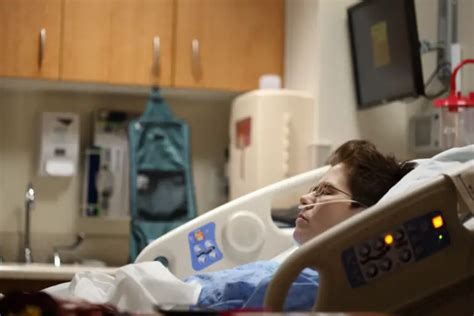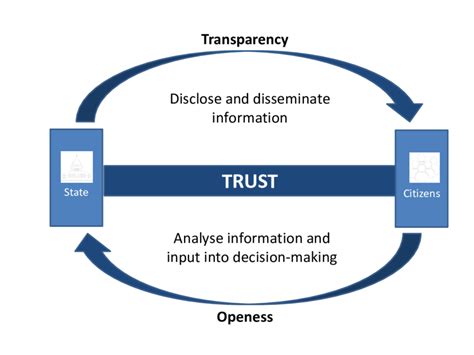
People who have emerged from comas are sharing vivid and often unsettling accounts of their experiences, challenging conventional understanding of consciousness and the afterlife. These survivors report phenomena ranging from out-of-body sensations and encounters with deceased loved ones to profound feelings of peace and access to seemingly universal knowledge.
The experiences of coma survivors, often labeled Near-Death Experiences (NDEs), are sparking intense debate among scientists, medical professionals, and theologians alike. While some attribute these accounts to neurological activity triggered by trauma or medication, others believe they offer a glimpse into a realm beyond human comprehension. A recent wave of coma survivors has come forward to share their stories, adding fuel to this ongoing discussion.
One such survivor, identified only as “Jane,” recounted a sensation of floating above her physical body, observing the medical team working frantically to revive her. “I remember looking down and seeing myself on the bed, and I wasn’t scared. I felt like I was finally free,” Jane explained. She described traversing a dark tunnel and eventually emerging into a brilliant light, where she was greeted by her grandmother, who had passed away several years prior. “She told me it wasn’t my time, that I had to go back,” Jane stated.
Another survivor, Mark, recalls a feeling of immense peace and understanding. “It was like all the knowledge of the universe was suddenly available to me,” he said. “I understood things I never could have comprehended before, about life, death, and everything in between.” Mark also recounted seeing deceased family members, as well as beings of light that communicated with him telepathically. “They showed me different aspects of my life, things I had done well and things I could have done better. It wasn’t judgmental, but more like a review,” he explained.
These accounts, while deeply personal and subjective, share common themes that resonate across cultures and belief systems. The sensation of leaving the body, encountering deceased loved ones, experiencing a profound sense of peace, and gaining access to universal knowledge are frequently reported elements of NDEs.
Dr. Sam Parnia, Director of Critical Care and Resuscitation Research at NYU Langone Medical Center, has dedicated his career to studying the science of death and consciousness. He emphasizes the importance of carefully examining these experiences, not dismissing them as mere hallucinations. “These experiences are reported by a significant percentage of people who are resuscitated from cardiac arrest or other life-threatening conditions,” Dr. Parnia stated. “We need to take them seriously and investigate them further to understand what is really happening.”
Parnia’s research involves analyzing brain activity during cardiac arrest and resuscitation to determine if there are specific neurological correlates to NDEs. He acknowledges the challenges of studying subjective experiences, but believes that rigorous scientific investigation is crucial to unraveling the mysteries of consciousness. He argues, “By studying these experiences systematically, we can potentially gain new insights into the nature of consciousness and the relationship between the brain and the mind.”
Skeptics, however, remain cautious about interpreting NDEs as evidence of an afterlife. They point to potential physiological explanations, such as the release of endorphins, the effects of anesthesia, or the oxygen deprivation that can occur during a coma. Dr. Susan Blackmore, a psychologist and well-known skeptic, argues that NDEs are likely the result of the brain trying to make sense of a stressful and confusing situation. “The brain is incredibly complex, and it’s capable of producing all sorts of strange and vivid experiences, especially when it’s under stress,” Blackmore explains. “It’s important to remember that correlation does not equal causation. Just because someone has an NDE during a coma doesn’t mean they’ve actually visited the afterlife.”
Despite the skepticism, the experiences of coma survivors continue to captivate and intrigue. The accounts of profound peace, encounters with loved ones, and access to universal knowledge challenge our conventional understanding of consciousness and the boundaries of life and death. As research continues, the mysteries surrounding NDEs may eventually be unraveled, providing a deeper understanding of the human experience.
The debate surrounding NDEs also highlights the limitations of current scientific models. While science can explain many aspects of the physical world, it struggles to account for subjective experiences like consciousness and emotion. The challenge lies in developing methodologies that can bridge the gap between objective observation and subjective experience. This requires collaboration between scientists, philosophers, and theologians to explore the complex interplay of mind, brain, and spirit.
Ultimately, the experiences of coma survivors offer a unique window into the unknown. Whether these experiences are glimpses of an afterlife or products of a stressed brain, they underscore the profound mysteries that still surround human consciousness. The ongoing exploration of these phenomena promises to challenge our assumptions and expand our understanding of what it means to be human.
Furthermore, many survivors have expressed that their NDEs have profoundly impacted their lives, leading to a greater appreciation for life, a reduced fear of death, and a stronger sense of purpose. They often report a shift in values, prioritizing relationships and personal growth over material possessions. This transformative aspect of NDEs suggests that even if they are not literal glimpses of an afterlife, they can still have a significant and positive impact on individuals’ lives.
The psychological impact of NDEs is an area of growing interest for researchers. Studies have shown that NDEs can lead to post-traumatic growth, a phenomenon where individuals experience positive psychological changes as a result of struggling with challenging circumstances. This growth can manifest as increased resilience, a deeper sense of meaning, and improved relationships. However, NDEs can also be distressing for some individuals, particularly if they involve frightening or confusing experiences. These individuals may require psychological support to process their experiences and integrate them into their lives.
The study of NDEs also raises ethical considerations. Medical professionals need to be sensitive to patients’ experiences and provide appropriate support, regardless of their personal beliefs about the nature of NDEs. It is important to create a safe space for patients to share their experiences without fear of judgment or dismissal. Furthermore, researchers need to conduct their studies ethically, ensuring that participants are fully informed about the potential risks and benefits of participating in research on NDEs.
The cultural context in which NDEs occur also plays a significant role in how they are interpreted. In some cultures, NDEs are readily accepted as evidence of an afterlife, while in others, they are viewed with skepticism. Cultural beliefs and values can shape the way individuals experience and interpret their NDEs. Therefore, it is important to consider the cultural context when studying NDEs to avoid imposing Western biases on non-Western experiences.
In conclusion, the experiences of coma survivors offer a compelling glimpse into the mysteries of consciousness and the potential for life beyond death. While the scientific community remains divided on the interpretation of NDEs, the personal accounts of those who have experienced them continue to inspire awe and wonder. As research progresses, we may eventually gain a deeper understanding of the nature of consciousness and the relationship between the brain, the mind, and the universe. Until then, the stories of coma survivors serve as a reminder of the profound mysteries that lie at the heart of the human experience. The field is increasingly calling for more interdisciplinary research, involving neuroscientists, psychologists, philosophers, and theologians, to fully explore the multifaceted nature of these experiences.
Frequently Asked Questions (FAQ) Regarding Coma Survivor Experiences and Near-Death Experiences (NDEs)
Q1: What is a Near-Death Experience (NDE)?
A: A Near-Death Experience (NDE) is a profound psychological event that can occur in individuals who are close to death, or in other situations of extreme physical or emotional stress. These experiences often include a range of sensations and perceptions, such as feelings of detachment from the body, intense feelings of peace, encounters with deceased loved ones, and visions of a bright light. While the exact nature and cause of NDEs are still debated, they are typically reported by individuals who have survived a life-threatening event, such as cardiac arrest, coma, or severe trauma. Dr. Sam Parnia, a leading researcher in this field, notes that NDEs are “reported by a significant percentage of people who are resuscitated from cardiac arrest or other life-threatening conditions.”
Q2: What are the common features of Near-Death Experiences as reported by coma survivors?
A: While each individual’s experience is unique, common features of NDEs often include:
- Out-of-Body Experience (OBE): A sensation of floating outside one’s physical body, often observing the scene from above. Survivors like “Jane” have described looking down and seeing their own bodies on the bed.
- Tunnel Experience: A sensation of traveling through a dark tunnel, often leading to a bright light.
- Encountering Deceased Loved Ones: Meeting and communicating with deceased relatives or friends.
- Feelings of Peace and Well-being: A sense of profound calm, serenity, and freedom from pain and anxiety.
- Life Review: A panoramic review of one’s life, often with insights into one’s actions and their impact on others. Survivor Mark described this as a “review,” not judgmental, but a way to understand their lives.
- Encountering Beings of Light: Interacting with luminous beings, often perceived as spiritual guides or divine entities.
- Access to Universal Knowledge: A sudden understanding of profound truths about life, death, and the universe.
- Reluctance to Return: A feeling of not wanting to return to one’s physical body.
Q3: What are some scientific explanations for NDEs?
A: Several scientific theories attempt to explain NDEs without invoking supernatural phenomena. These include:
- Cerebral Hypoxia: Oxygen deprivation to the brain, which can cause hallucinations and altered states of consciousness.
- Endorphin Release: The release of endorphins, the body’s natural painkillers, in response to stress or trauma, which can induce feelings of euphoria and detachment.
- Anesthesia Effects: The effects of anesthesia drugs, which can alter brain function and perception.
- Temporal Lobe Seizures: Abnormal electrical activity in the temporal lobe of the brain, which can produce vivid sensory experiences.
- Depersonalization/Derealization: Psychological defense mechanisms that can cause feelings of detachment from oneself or one’s surroundings. Dr. Susan Blackmore suggests that the brain tries to make sense of a stressful situation, which can lead to strange experiences.
Q4: Is there scientific evidence to support the existence of an afterlife based on NDEs?
A: Currently, there is no definitive scientific evidence to prove or disprove the existence of an afterlife based solely on NDEs. While the experiences are compelling, they are subjective and difficult to verify objectively. Skeptics argue that NDEs can be explained by physiological and psychological factors. Proponents, like Dr. Parnia, emphasize the need for rigorous scientific investigation and open-minded exploration of these phenomena, stating that “By studying these experiences systematically, we can potentially gain new insights into the nature of consciousness and the relationship between the brain and the mind.” The debate continues, highlighting the limitations of current scientific models in fully explaining subjective experiences.
Q5: How do NDEs affect individuals who experience them?
A: NDEs can have profound and lasting effects on individuals. These effects can be both positive and negative. Some common impacts include:
- Increased Appreciation for Life: A greater sense of gratitude for life and a desire to live it more fully.
- Reduced Fear of Death: A diminished fear of death and a belief in the continuity of consciousness.
- Stronger Sense of Purpose: A clearer understanding of one’s purpose in life and a desire to make a positive contribution to the world.
- Shift in Values: A change in priorities, with a greater emphasis on relationships, personal growth, and spiritual values, and a reduced focus on material possessions.
- Increased Spirituality: A heightened sense of connection to something larger than oneself.
- Post-Traumatic Growth: Positive psychological changes resulting from struggling with challenging circumstances.
- Distress and Confusion: In some cases, NDEs can be distressing or confusing, leading to anxiety, fear, or difficulty integrating the experience into one’s life. These individuals may require psychological support.
- Relationship Changes: Some survivors report difficulty relating to people who have not had similar experiences, leading to changes in relationships.
- Increased Empathy and Compassion: Many survivors report a heightened sense of empathy and compassion for others.
- Difficulties with Reintegration: Returning to normal life can be difficult for some survivors who feel that their perspectives and priorities have fundamentally shifted.
Q6: What is the current research landscape surrounding NDEs?
A: Research on NDEs is ongoing and involves various disciplines, including neuroscience, psychology, medicine, and philosophy. Key areas of research include:
- Neuroimaging Studies: Using techniques like EEG and fMRI to study brain activity during and after cardiac arrest or other life-threatening events.
- Clinical Studies: Collecting and analyzing data from patients who have reported NDEs to identify common patterns and predictors.
- Psychological Assessments: Evaluating the psychological impact of NDEs on individuals’ well-being, coping mechanisms, and quality of life.
- Philosophical Inquiries: Exploring the implications of NDEs for our understanding of consciousness, the nature of reality, and the possibility of an afterlife.
- Cross-Cultural Studies: Examining NDEs across different cultures to identify universal and culturally specific features.
- The AWARE (Awareness during Resuscitation) studies: These studies aim to objectively examine awareness and experiences during cardiac arrest by using hidden targets and auditory stimuli during resuscitation efforts.
- Qualitative Research: In-depth interviews with NDE experiencers to gain a deeper understanding of their experiences and the impact on their lives.
Q7: Are NDEs universally positive experiences?
A: No, NDEs are not always positive. While many report feelings of peace and love, others experience distressing or frightening NDEs. These negative NDEs may include feelings of terror, isolation, or a sense of being in a void. Some individuals may experience a “hellish” NDE, characterized by feelings of punishment or judgment. The factors that contribute to the valence (positive or negative) of an NDE are not fully understood, but may include pre-existing psychological conditions, cultural beliefs, and individual life experiences. It’s important to acknowledge the diversity of NDEs and not assume that all experiences are uniformly positive.
Q8: How can medical professionals best support patients who have had NDEs?
A: Medical professionals can support patients who have had NDEs by:
- Listening empathetically: Providing a safe and non-judgmental space for patients to share their experiences.
- Validating their experiences: Acknowledging that their experiences are real and important to them, even if the medical professional does not fully understand them.
- Providing information and resources: Offering information about NDEs and directing patients to support groups or therapists who specialize in working with NDE experiencers.
- Collaborating with mental health professionals: Consulting with psychologists or psychiatrists to address any psychological distress or trauma related to the NDE.
- Respecting their beliefs: Avoiding imposing their own beliefs about NDEs on the patient and respecting the patient’s interpretation of their experience.
- Educating themselves: Learning more about NDEs to better understand the phenomenon and provide appropriate support.
- Being aware of potential integration challenges: Helping patients navigate the challenges of reintegrating their NDE into their daily lives and relationships.
- Recognizing the potential for spiritual distress: Addressing any spiritual questions or concerns that may arise as a result of the NDE.
Q9: Are children’s NDEs different from those of adults?
A: While children’s NDEs share some similarities with those of adults, there are also some notable differences. Children’s NDEs tend to be shorter and less complex than those of adults. They may be more focused on sensory experiences, such as seeing colors or hearing sounds, and less on cognitive or emotional aspects, such as life reviews or encounters with deceased loved ones. Children are also more likely to report encounters with angelic beings or imaginary friends. Additionally, children’s NDEs are often influenced by their developmental stage and cognitive abilities. They may interpret their experiences in simpler and more concrete terms than adults. Despite these differences, children’s NDEs can still have a profound impact on their lives.
Q10: How does cultural background influence NDEs?
A: Cultural background significantly influences the content, interpretation, and acceptance of NDEs. The specific imagery and symbols that appear in NDEs often reflect the cultural beliefs and expectations of the individual. For example, individuals from Western cultures may be more likely to report seeing Jesus or other Christian figures, while those from Eastern cultures may report seeing Buddha or Hindu deities. The way individuals interpret their NDEs is also shaped by their cultural worldview. In some cultures, NDEs are readily accepted as evidence of an afterlife or spiritual reality, while in others, they may be viewed with skepticism or attributed to psychological or physiological factors. Furthermore, the way individuals share and process their NDEs is influenced by cultural norms and values. In some cultures, it may be more acceptable to openly discuss spiritual experiences, while in others, it may be considered taboo. Therefore, it is crucial to consider the cultural context when studying and interpreting NDEs.









